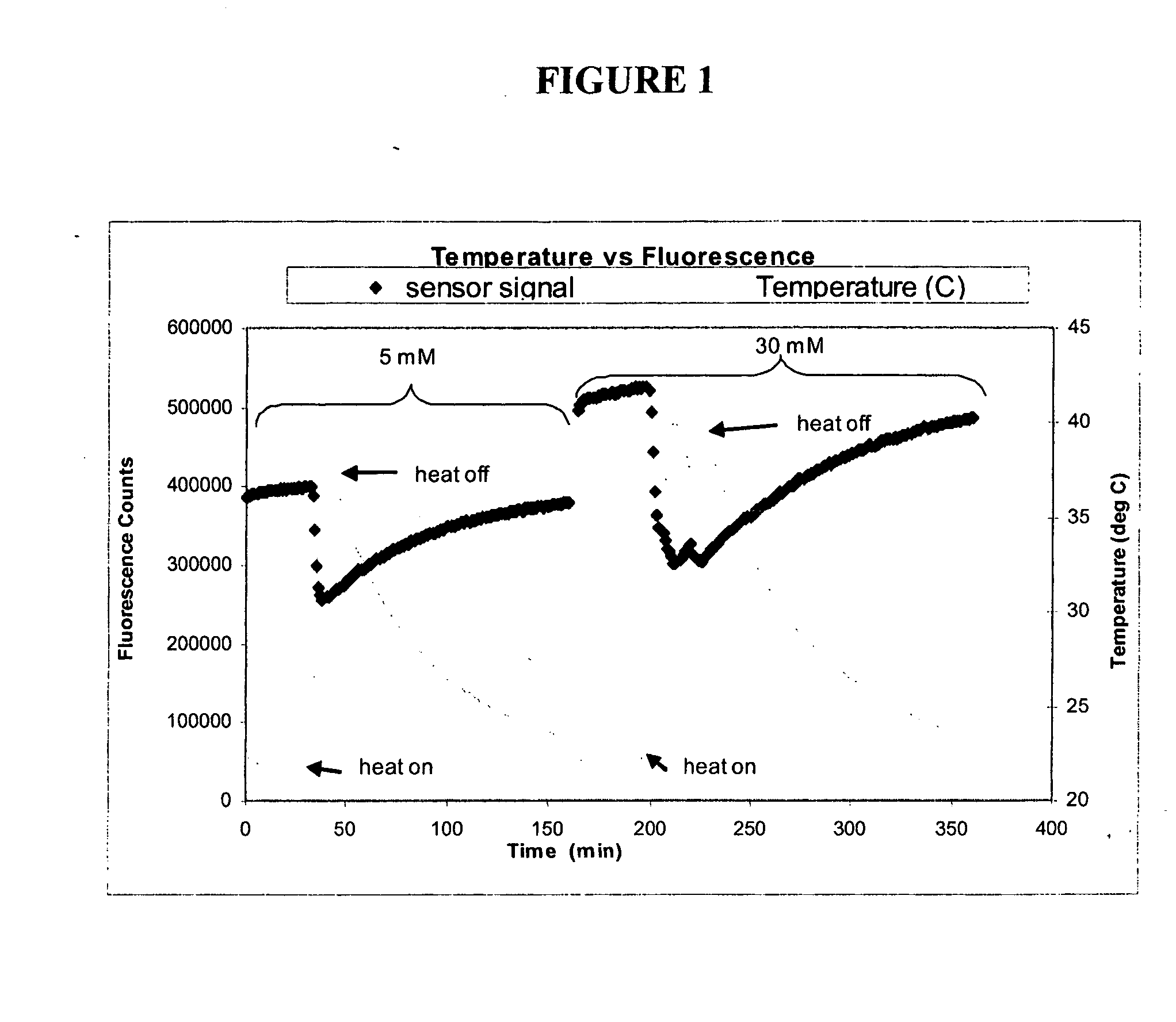Methods of correcting a luminescence value, and methods of determining a corrected analyte concentration
a luminescence value and luminescence correction technology, applied in the field of luminescence value correction methods, can solve the problems of slow progress with these approaches, high or low glucose or other analytes may have detrimental effects, and patients may not be comfortable using this method
- Summary
- Abstract
- Description
- Claims
- Application Information
AI Technical Summary
Problems solved by technology
Method used
Image
Examples
example 1
[0161] The objective of this experiment was to determine whether Continuous Glucose Monitoring System (“CGMS”) sensors are sensitive to temperature, and if so, to determine the magnitude and repeatability of the sensitivity. This experiment depicts, inter alia, calculations for correcting fluorescence if temperature is measured independently.
[0162] Several experiments were performed using various optical sensors (fiber-in-needle). Sensors were placed in scintillation vials containing glucose solutions (5 and 30 mM) and which were located in a heating block. The block temperature was cycled from room temperature to 40° C. and back to room temperature once for each glucose concentration. Sensor fluorescence and solution temperature data were collected. Sample data from one of those experiments are depicted in FIG. 1. Oscillations about the set point are due to the heating block controller.
[0163] For each experiment, temperature differences were c...
example 2
[0187] An example of temperature correction using a second luminescent reporter is presented below. In this example, both the sensing and reference reporting groups have temperature sensitivities largely quadratic in temperature, but the magnitude of sensitivity differs for each. In this example the reference reporting group is the same dye as used in the sensor, but is attached to a binding protein which is not sensitive to the presence of analyte over the range of expected analyte concentrations. In other embodiments, the reference dye could have different excitation / emission properties than the sensing group.
[0188] Experiments were performed using various optical sensors (fiber-in-needle) with one of two protein-dye combinations. Sensors were placed in scintillation vials containing 30 mM glucose solutions and which were located in a heating block. The block temperature was cycled from room temperature to 35° C. and back to room temperature twice. Sensor fl...
PUM
| Property | Measurement | Unit |
|---|---|---|
| Temperature | aaaaa | aaaaa |
| Concentration | aaaaa | aaaaa |
| Fluorescence | aaaaa | aaaaa |
Abstract
Description
Claims
Application Information
 Login to View More
Login to View More - R&D
- Intellectual Property
- Life Sciences
- Materials
- Tech Scout
- Unparalleled Data Quality
- Higher Quality Content
- 60% Fewer Hallucinations
Browse by: Latest US Patents, China's latest patents, Technical Efficacy Thesaurus, Application Domain, Technology Topic, Popular Technical Reports.
© 2025 PatSnap. All rights reserved.Legal|Privacy policy|Modern Slavery Act Transparency Statement|Sitemap|About US| Contact US: help@patsnap.com



